Allison Finch
Contributor
So, I just got back from a month in Indonesia. My trip was in two parts. The first half of the trip was in Lembeh Straits on the Island of Sulawesi and the second half of the trip was in Cenderawasih Bay in West Papua. I have only JUST looked at a few of my photos and have put none of them through any photoshop, yet. I got pretty sick after getting home and am just now getting up to speed.
I will start with Sulawesi and a few of the many photos from there.
We did some land touring for several days before settling in for our diving. We went to a nature preserve to see the world's smallest primate, the trasier. You had to go out at night, as they are nocturnal. We went in the wee hours of the morning, just before they went back to the trees they slumber in during the day. We saw quite a few of them.
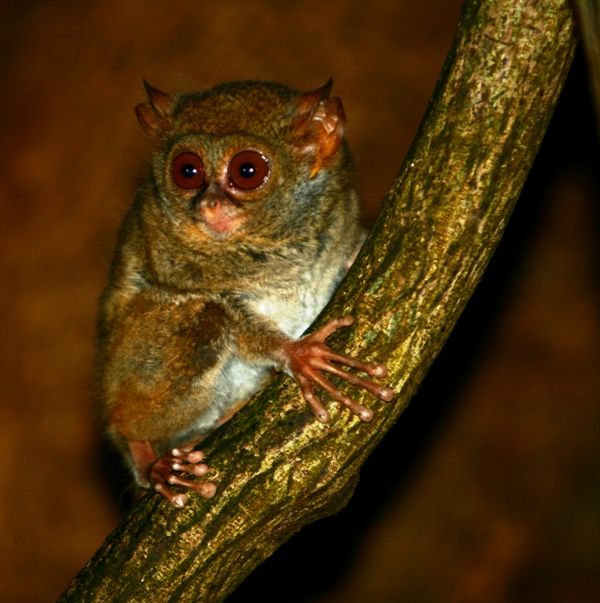 ]
]
Just after dawn I stalked within sight of an amazing kingfisher
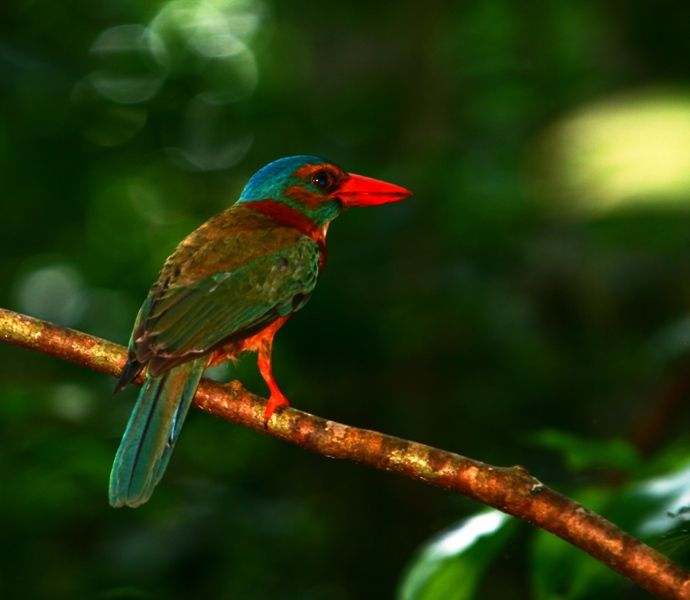
I love Sulawesi and really enjoy watching the bindis trot around the city. The heavyset lady in the back almost picked this pony off the ground.
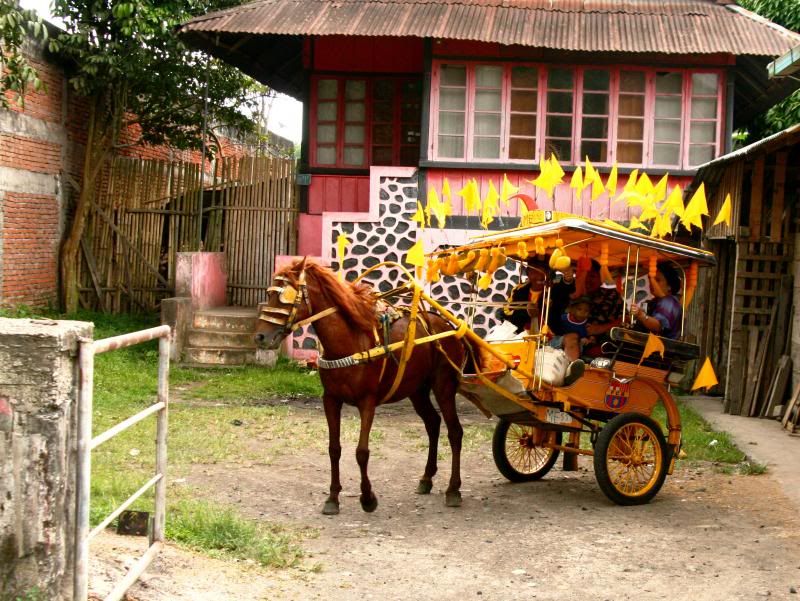
A quick stop on the market for some "rat-on-a-stick"
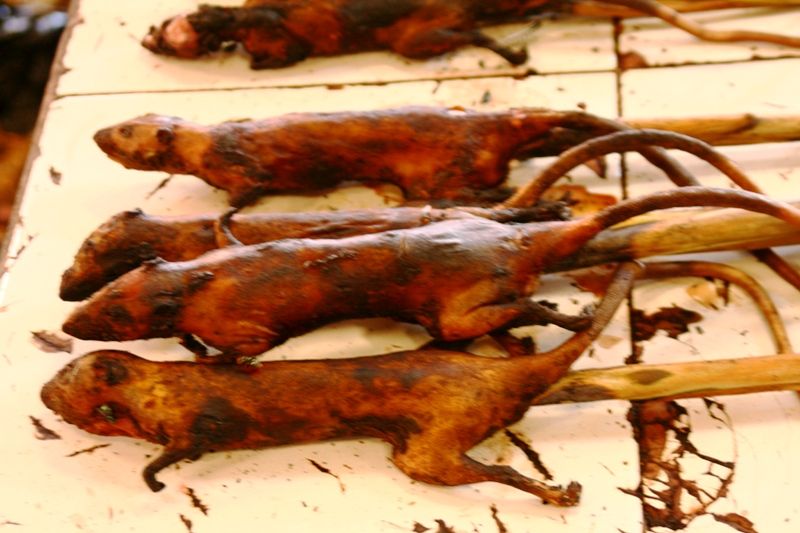
Then, on to the diving in the Strait. The only place I stay, these days, is Kasawari Resort. I just love this place. Elegant rooms, great food. and good diving. They have a fabulous camera room!!
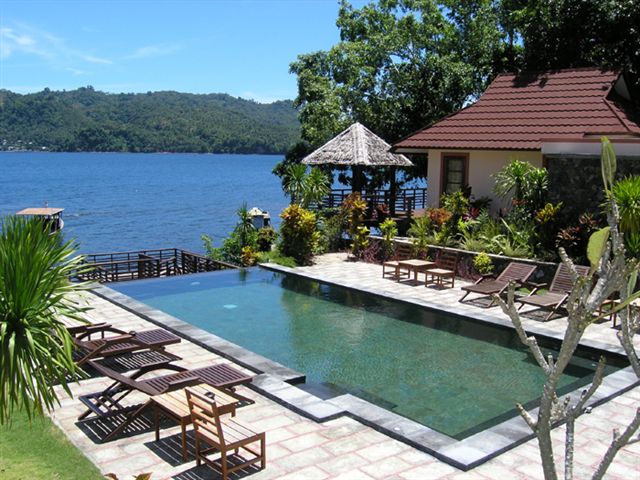
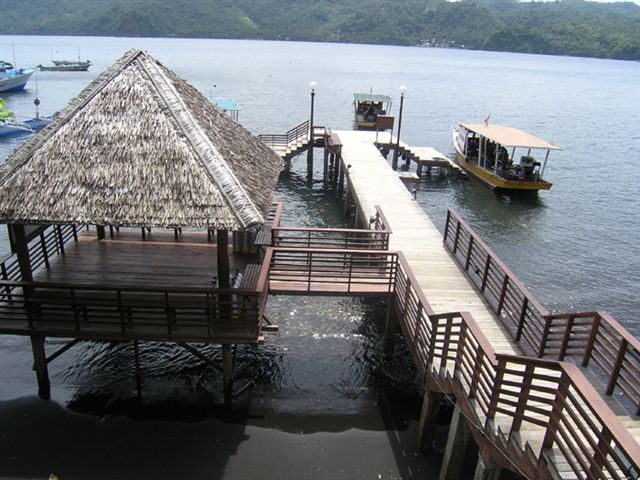
The diving was predictably wonderful!! I saw lots of my favorite critter....frogfish and cephlapods.
Giant froffish

Hairy striated frogfish
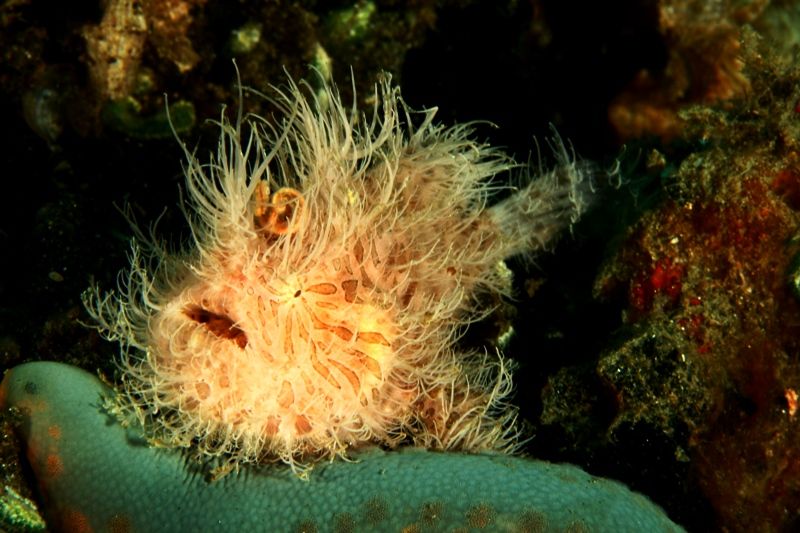
Painted frogfish
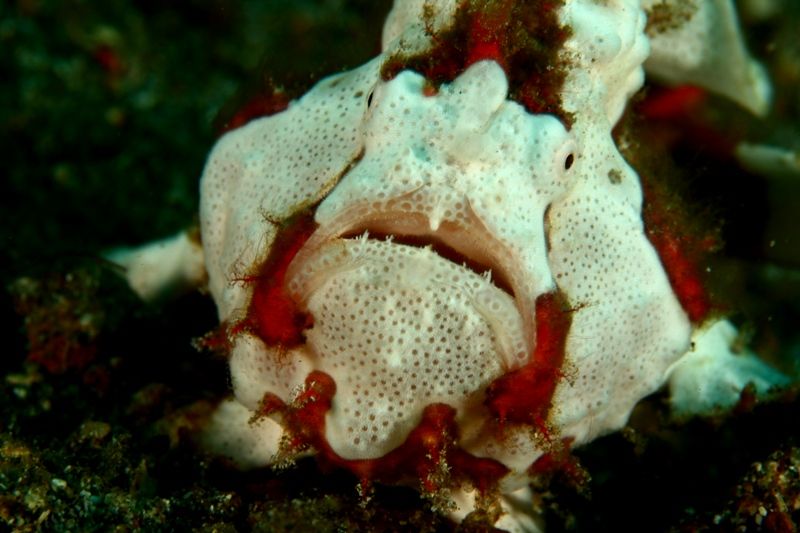
Blue ringed octo

Wonderpus
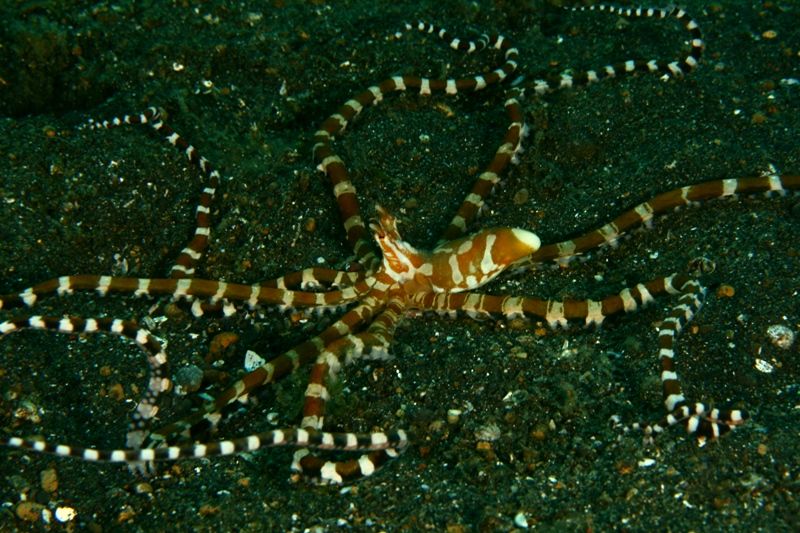
Pontohi pygmy seahorse

I can't wait to get to my other photos!! There are so many better ones!
Love the Xeno crabs
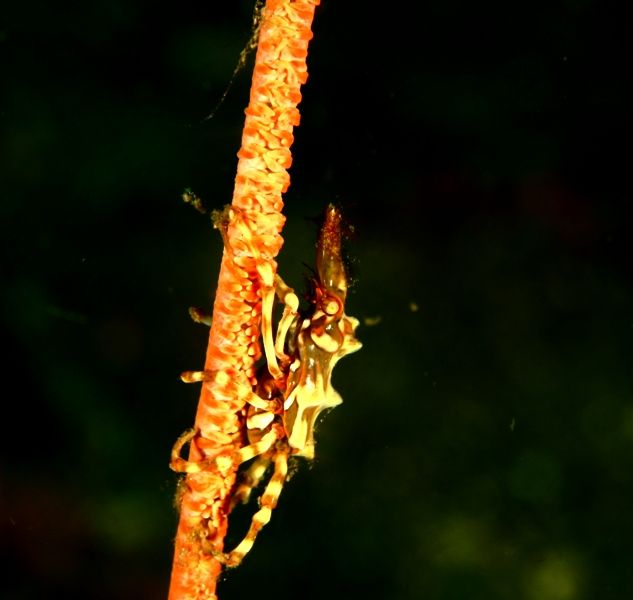
Next, West Papua.......
---------- Post added October 26th, 2013 at 10:21 AM ----------
When our time in Lembeh was done, it was time to jump on the "bus" airline to stop at every island in Indonesia to make our way to Manokwari on the north shore of West Papua.

There we boarded the MSY Seahorse, a native style boat with all the amenities. Beautiful cabins and nice dive deck.

Then, we waited to leave port.....and waited.....and waited. We found good diving while we waited. It turned out that the harbor masters were demanding a bribe before they would allow us to leave. After much negotiation, and the boat having to pay a 700.00 bribe, we were on our way.
We found diving that was quite good, but we really didn't come here for reef diving. We knew it would not be as good as, say Raja Ampat, but we had bigger fish in mind. This is the destination made famous by National Geographic. In Cenderawasih Bay, there are sea gypsies from Sulawesi that have come here to fish. They have huge floating platforms (bagans) that have many lights and nets suspended under them. At night, they lower the nets and turn the lights on. Huge schools of baitfish gather and, in the morning, the nets are raised catching the baitfish.
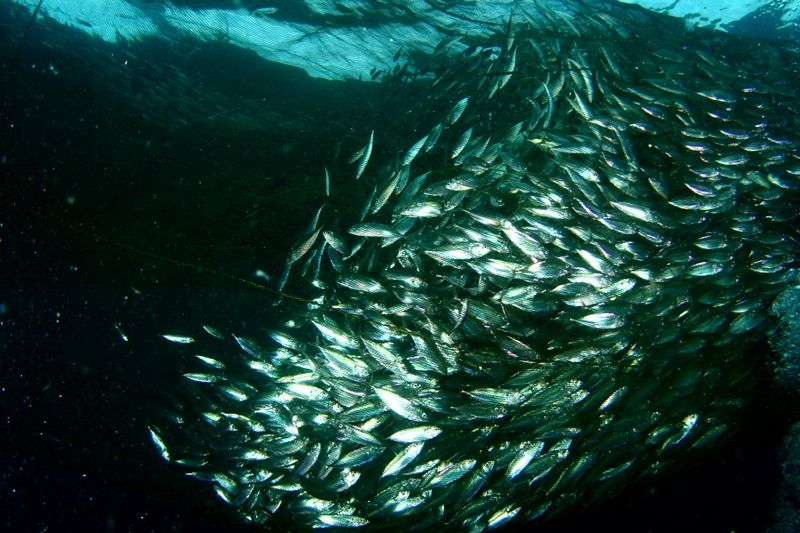
These baitfish are sold to the tuna fishermen for bait.
Then, whalesharks discovered the bounty caught in the nets. They started showing up at the bagans and sucked on the nets to try to suck some smaller fish out.
Luckily, the sea gypsies are superstitious and saw the sharks are good luck. They started feeding the whalesharks the less valuable bait. This brought even more sharks. If it had been anyone else, these magnificent sharks would have been "finned". Instead, the diving community discovered them. In most whale shark encounters, you have to try to swim to keep up with the feeding sharks. As a result, no scuba, which drags the divers, is used. Here, the sharks mill around and don't leave. You are allowed to use scuba to stay still and watch as the fish feed.
The Seahorse sends out crew to find which bagans have sharks. Then, they will buy their whole nights catch. The fishermen will chop them up into tiny pieces and drop them to the waiting sharks.
All of the sharks are younger males, no females at all. There was one quite large one, but many were smaller. Here are some of the photos.
Tha bagan with the fisherman chopping fish
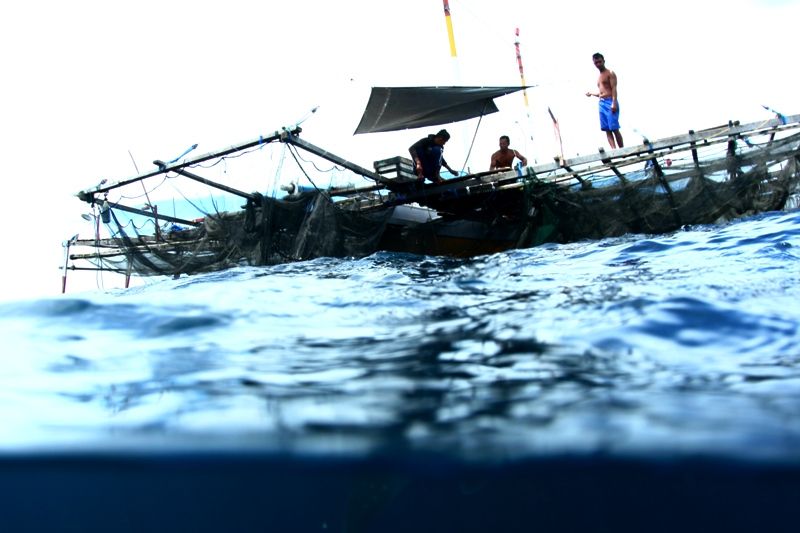

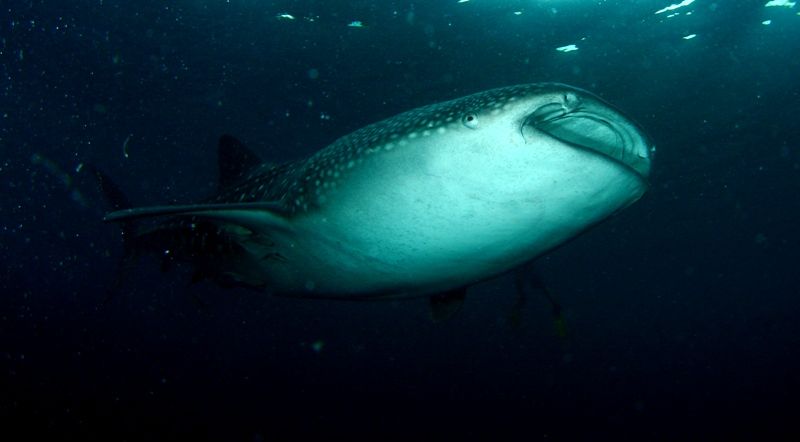
One of the bigger ones. And, NO, the diver is not touching the shark.
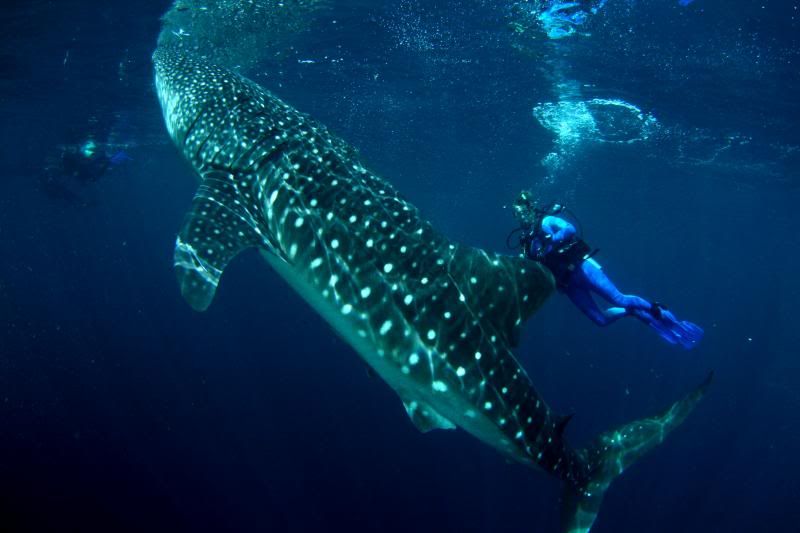
Hanging onto the nets watching a small one suck on the net
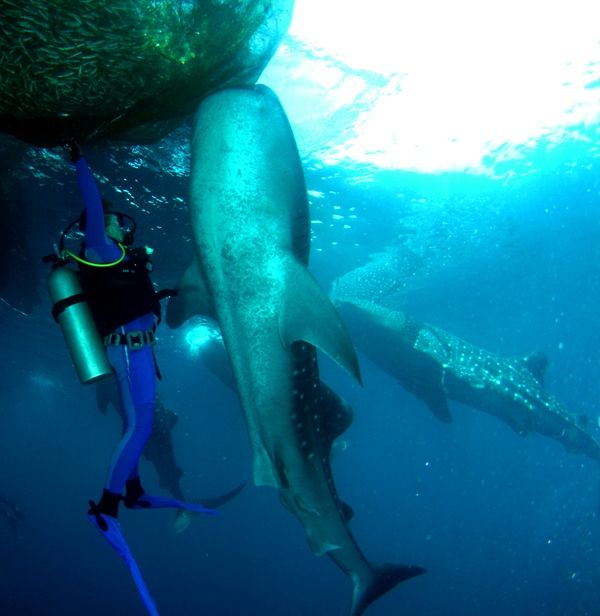
It was comical watching the many remoras on the sharks. Some were covered with many of them, others had only a few. We found that the popular sharks were the best at getting to the best feeding locations, so they stuck with that shark.
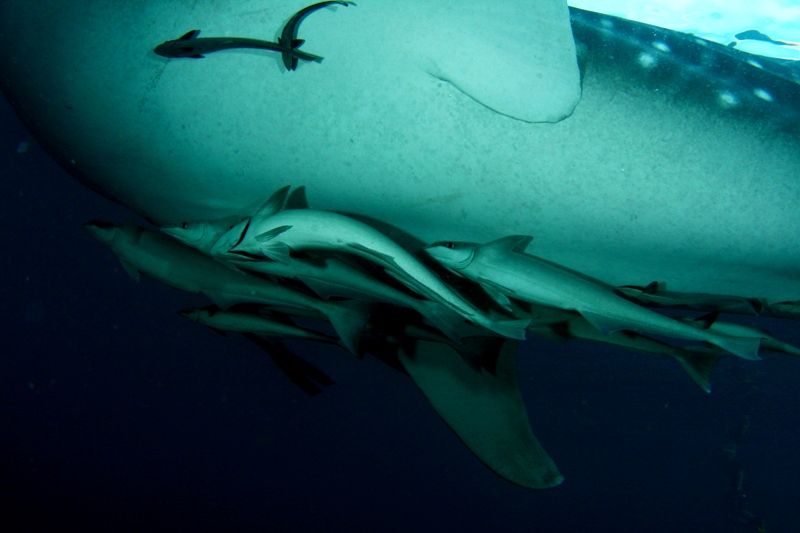
The big honker

They would, literally beg at the spot where the fish were being chopped. The chopping sound was the "dinner call". They sucked huge amounts of water with all the bits in it.
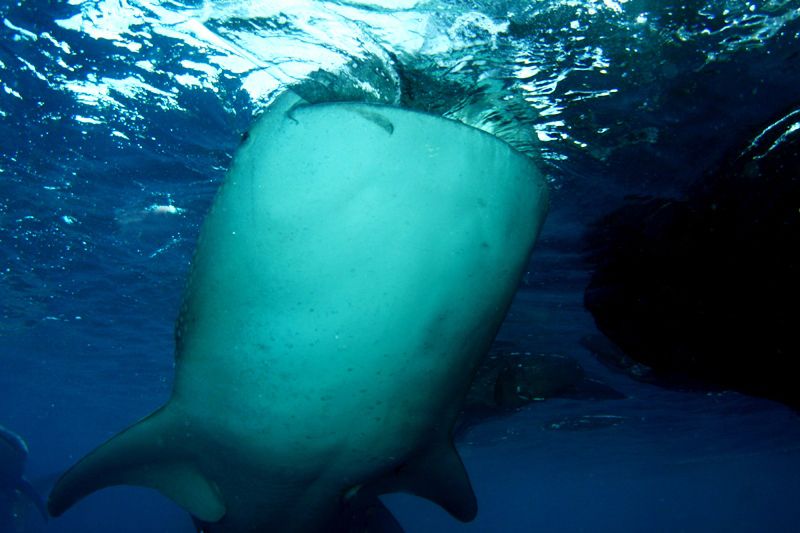
For three full days, all we did is dive with these sharks. We often had up to seven swimming around us at any time. They were very aware of us and even curious about us. If you got in their way, they had no qualms in gently nudging you aside to get by. Somehow, you just never got bored watching them for hours.
Finally, it was time to leave for the port of Nabire, where we would fly out. I enjoyed all the diving, even if the non shark areas didn't rival RA. I did, however, get my first good photo of a pygmy pipehorse (Lembeh sea dragon), which I have been trying to find for a long time. I'll find that photo, by golly! I will try to add photos as I get to them.
Now, I have to admit that part of me hesitates about this practice. I have always been a "no feed" advocate when it comes to sharks or any other critter. While I may balk a bit over this practice, it has been going on for a long time. If feeding these sharks allows the world's divers to come here to experience them, It can be viewed as a way to protect and preserve them. When they become a source of renewable income, instead if a quick buck in the finning market, there is a definite benefit. So, if you want to be in the epicenter of a great experience, this may be for you.
I will start with Sulawesi and a few of the many photos from there.
We did some land touring for several days before settling in for our diving. We went to a nature preserve to see the world's smallest primate, the trasier. You had to go out at night, as they are nocturnal. We went in the wee hours of the morning, just before they went back to the trees they slumber in during the day. We saw quite a few of them.
 ]
]Just after dawn I stalked within sight of an amazing kingfisher

I love Sulawesi and really enjoy watching the bindis trot around the city. The heavyset lady in the back almost picked this pony off the ground.

A quick stop on the market for some "rat-on-a-stick"

Then, on to the diving in the Strait. The only place I stay, these days, is Kasawari Resort. I just love this place. Elegant rooms, great food. and good diving. They have a fabulous camera room!!


The diving was predictably wonderful!! I saw lots of my favorite critter....frogfish and cephlapods.
Giant froffish

Hairy striated frogfish

Painted frogfish

Blue ringed octo

Wonderpus

Pontohi pygmy seahorse

I can't wait to get to my other photos!! There are so many better ones!
Love the Xeno crabs

Next, West Papua.......
---------- Post added October 26th, 2013 at 10:21 AM ----------
When our time in Lembeh was done, it was time to jump on the "bus" airline to stop at every island in Indonesia to make our way to Manokwari on the north shore of West Papua.

There we boarded the MSY Seahorse, a native style boat with all the amenities. Beautiful cabins and nice dive deck.

Then, we waited to leave port.....and waited.....and waited. We found good diving while we waited. It turned out that the harbor masters were demanding a bribe before they would allow us to leave. After much negotiation, and the boat having to pay a 700.00 bribe, we were on our way.
We found diving that was quite good, but we really didn't come here for reef diving. We knew it would not be as good as, say Raja Ampat, but we had bigger fish in mind. This is the destination made famous by National Geographic. In Cenderawasih Bay, there are sea gypsies from Sulawesi that have come here to fish. They have huge floating platforms (bagans) that have many lights and nets suspended under them. At night, they lower the nets and turn the lights on. Huge schools of baitfish gather and, in the morning, the nets are raised catching the baitfish.

These baitfish are sold to the tuna fishermen for bait.
Then, whalesharks discovered the bounty caught in the nets. They started showing up at the bagans and sucked on the nets to try to suck some smaller fish out.
Luckily, the sea gypsies are superstitious and saw the sharks are good luck. They started feeding the whalesharks the less valuable bait. This brought even more sharks. If it had been anyone else, these magnificent sharks would have been "finned". Instead, the diving community discovered them. In most whale shark encounters, you have to try to swim to keep up with the feeding sharks. As a result, no scuba, which drags the divers, is used. Here, the sharks mill around and don't leave. You are allowed to use scuba to stay still and watch as the fish feed.
The Seahorse sends out crew to find which bagans have sharks. Then, they will buy their whole nights catch. The fishermen will chop them up into tiny pieces and drop them to the waiting sharks.
All of the sharks are younger males, no females at all. There was one quite large one, but many were smaller. Here are some of the photos.
Tha bagan with the fisherman chopping fish



One of the bigger ones. And, NO, the diver is not touching the shark.

Hanging onto the nets watching a small one suck on the net

It was comical watching the many remoras on the sharks. Some were covered with many of them, others had only a few. We found that the popular sharks were the best at getting to the best feeding locations, so they stuck with that shark.

The big honker

They would, literally beg at the spot where the fish were being chopped. The chopping sound was the "dinner call". They sucked huge amounts of water with all the bits in it.

For three full days, all we did is dive with these sharks. We often had up to seven swimming around us at any time. They were very aware of us and even curious about us. If you got in their way, they had no qualms in gently nudging you aside to get by. Somehow, you just never got bored watching them for hours.
Finally, it was time to leave for the port of Nabire, where we would fly out. I enjoyed all the diving, even if the non shark areas didn't rival RA. I did, however, get my first good photo of a pygmy pipehorse (Lembeh sea dragon), which I have been trying to find for a long time. I'll find that photo, by golly! I will try to add photos as I get to them.
Now, I have to admit that part of me hesitates about this practice. I have always been a "no feed" advocate when it comes to sharks or any other critter. While I may balk a bit over this practice, it has been going on for a long time. If feeding these sharks allows the world's divers to come here to experience them, It can be viewed as a way to protect and preserve them. When they become a source of renewable income, instead if a quick buck in the finning market, there is a definite benefit. So, if you want to be in the epicenter of a great experience, this may be for you.




